The report follows a series of similar installments dating back to May of 2006. Munster addressed 16 Apple questions last November and followed up with answers to 15 more questions in May.
As was the case with those reports, Munster's questions and answers are being republished in full in order to offer readers the full benefit of the analyst's insight:
Questions on General Business Operations:
What is the current state of Apple's business?
Following 25 hours of counting iPhone and Mac sales in U.S. Apple retail stores across the country and recent NPD data on Macs and iPods, we believe the current quarter is tracking in-line with Street expectations. Driven by the Oct. launch of new MacBooks, Macs (and notebooks in particular) are selling well despite the weakened consumer confidence. We have analyzed NPD data for the 1st month of the Dec. quarter (Oct.) which is up 28% y/y; it leads us to a Mac number of between 2.5m-2.7m (we believe Street consensus is ~2.6m Macs in the quarter). This range implies y/y Mac unit growth of 8%-16% vs. the Street at 13% y/y growth. That said, iPod growth continues to slow, limiting somewhat the positive impact from the new Macs. Net-net we believe the Dec. quarter is tracking in-line with Street expectations.
How might Apple's view the challenging economy?
We believe Apple strategy in the December quarter is similar to the September quarter. The company is taking a disciplined approach to costs and build rates for the holiday quarter. In order to do this, we believe the company is managing its component orders based on sell-through of their products using daily sales reports from its own retail stores and its largest channel partners. The result is a measured approach to relatively low visibility into sales during the holiday quarter, particularly with the most important weeks of iPod coming in the next few weeks.
How should we think about Apple's gross margin guidance for FY09?
Several times since issuing its FY09 guidance of "about 30%", Apple has reiterated the same guidance but has placed increasing emphasis on the word "about." We continue to expect upside to the guided gross margin level and believe 31% or slightly higher is achievable in FY09.
Mac Related Questions:
How are the new aluminum (and older plastic) MacBooks selling?
Following 25 hours of counting Mac sales in U.S. Apple retail stores across the country and recent NPD data on Macs, we believe the new aluminum MacBooks ($1,299) are selling well. While we do not believe sales are exceeding Apple's own internal estimates, as the stores have had ample supply throughout the launch, we now believe the Mac unit number for the Dec. quarter may exceed our and Street expectations of 2.6m. We note that the new product will likely lift Mac ASP's; during our in-store checks we found that the new aluminum models (priced $200 higher at the entry point than the previous white plastic MacBook model) are vastly more popular than the newly priced white plastic model ($999). We caution that our in-store checks do not reflect the direct sales to the Education market where the $999 model is likely finding more success, but we believe the net effect of the new aluminum MacBooks will be a lift in Mac ASP's. We are modeling for Mac ASP's to rise sequentially from $1,386 in the Sept. quarter (in which lower-priced Education sales prevail) to $1,552 in the Dec. quarter (in which the higher-priced aluminum MacBook is now available).
Will Apple release a netbook?
Steve Jobs has indicated that the company "doesn't do cheap", and has not yet entered what he feels to be a "nascent market" for low-cost laptops, called netbooks. We believe that Apple has focused its efforts on the iPhone to accomplish much of what a netbook accomplishes: a mobile web browser. That said, we believe Apple could find success with a product in its lineup between the iPhone and the MacBook. If Apple chose to release such a product, we believe the most likely candidate would be an 11" MacBook Air priced between $800 and $1,000, which could be released some time in CY09. Further down the road, Apple could leverage its multi-touch patent portfolio for a product with a similar price range and feature set in the form of a tablet Mac, which is more likely to be released in CY10 or beyond.
iPhone Questions:
What is Apple's gross margin on the iPhone?
Using numbers released following Apple's Sept. quarter, we now believe the ASP of the iPhone (from Apple to the carriers) is about $630. However, we also believe that Apple will be able to lower its price of the phone to carriers by up to $150 in the next 6 months, but maintain its margins, by leveraging falling component pricing. As such, we are modeling the iPhone ASP to be about $475 in the Dec. quarter. We believe the gross margin on the iPhone is higher than the company-wide gross margin, which will provide a source of earnings leverage as the iPhone grows as a percentage of sales in FY09. Note that we are modeling for the iPhone to grow from 5.7% of sales in FY08 to 18.4% of sales in FY09. Specifically, we believe Apple's gross margin on the iPhone is in the high 30s or low 40s.
How far are we into the iPhone's international rollout?
By the end of CY08, Apple has indicated that it will expand the iPhone's addressable subscriber base significantly. In other words, the iPhone's international rollout is still in its early stages. According to our checks on the iPhone international website, availability will grow from a subscriber base of about 660m subs in 44 countries in late Aug. to about 989m subs in 73 countries by the end of the year. This represents 50% growth in addressable subscribers ahead of or during the holiday quarter. For example, since Aug., three Russian wireless providers including MTS (61m subs), Beeline (42m subs), and MegaFon (37m subs) have launched the iPhone 3G. Also note that we continue to believe Apple will launch the iPhone with one or two carriers in China in CY09, adding either China Mobile (550m subs) and/or China Unicom (128m subs), which would further expand the sub base by 13% (China Unicom only), 51% (China Mobile only), or 63% (both Chinese carriers).
Will Apple release the iPhone in China?
We continue to believe Apple will launch the iPhone with one or two carriers in China in CY09, adding either China Mobile (550m subs) and/or China Unicom (128m subs). The company has indicated that it remains focused on launching the iPhone in China, but several hurdles remain. The dust has not yet settled in China regarding the licensing of the 3G networks among the major carriers. We expect the Chinese government to make announcements on the licensing within the next 1-2 months (possibly sooner). In addition, the inclusion of Wi-Fi in the iPhone may be a limiting factor in China. For example, Apple does not yet sell its iPod touch in China possibly due to the inclusion of Wi-Fi. Apple could solve this issue by creating a version of the iPhone software that disables the Wi-Fi features in the Chinese models.
When will Apple release a new iPhone?
Most investors believe the iPhone hardware will be the same throughout 2009 as it is today; we disagree. While Apple has indicated that it differentiates the iPhone from its competitors by software, the company has not addressed its strategy to segment the market by expanding the iPhone lineup as it has the iPod lineup. Specifically, Apple could offer a SKU at a lower price than the current $199 entry price and/or a premium SKU at or above the higher priced $299 16GB model. Apple could lower the price by removing features like 3G and GPS; alternatively, Apple could make a premium SKU with a sleeker design using higher-end materials, more processing power, better graphics and more storage. We believe Steve Jobs' comments on the Sept. quarter conference call regarding Apple's iPhone strategy in CY09 support our thesis of new iPhone models at different prices in CY09: "I think we have to be the best. And I think we have to not leave a price umbrella underneath us."
iPod Related Questions:
How should investors think about iPod growth going forward?
Growth in the iPod business is clearly under pressure, with y/y growth coming down to 6% y/y in FY08 vs. 31% y/y in FY07. We are modeling for a -12% y/y contraction on a unit basis in the iPod business for FY09. That said, the iPod is an important product for Apple as an entry point into the Apple device ecosystem, and introduces users to other Apple products like the iPhone and the Mac. Moreover, Apple has indicated that there are currently 65m active iTunes accounts. Given the total 174m iPods sold to date (through Sep-08), this equates to 2.8 iPods per active iTunes accounts. However, we believe some users and families share a single iTunes account for several iPods. Assuming 2 iPods per person implies 87m iPod users (including older iPods that are no longer used). In other words, with 87m iPod users, Apple has a large addressable base for iPhone and Mac sales from which it can draw in the coming years.
Questions on Apple's Retails Stores:
How many retail stores will Apple open next year?
While Apple opened a record-high 50 retail stores in FY08, we expect the store openings to slow in FY09. Specifically, we believe Apple will open 20-30 stores in FY09. The company is taking a disciplined approach to new lease obligations given the current macroeconomic reality and the retail initiative is also maturing to a point where slower growth is warranted. Apple is nearing a saturation point for top-tier malls in the U.S., where about 300 U.S. locations is a rough ceiling for specialty retailers. Apple's trend has been to focus on its international store openings more than it has in the past. For example, Apple has not reached the same critical mass in Canada, the U.K., or Australia as it has in the U.S. We also expect Apple to add more stores in China following a successful launch of its Beijing store. In other words, we expect Apple to open stores in fewer new countries in FY09, but we anticipate Apple to strategically increase the number of stores in countries it has already entered. Such a plan would allow Apple retail to invest in growth in Apple's core international markets.
How will Apple stores sell the iPhone 3G as a gift during the holidays?
Due to changes in the activation process (in-store instead of at home), the iPhone 3G is more difficult to purchase as a gift. AT&T offers gift cards for the iPhone 3G and voice and data plans, but a simple gift card is not as exciting as the phone itself. To solve this, it would make sense if Apple follows AT&T footsteps and offers an iPhone 3G gift cards this holiday season. If this is successful, we see it as a positive for shares of AAPL given most investors are not expecting a strong holiday period for the iPhone.
Munster maintains a Buy rating on Apple shares with a $250 price target.
 AppleInsider Staff
AppleInsider Staff


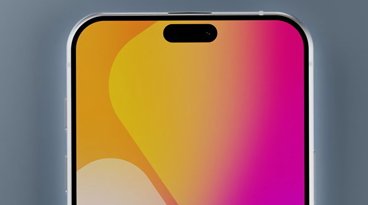

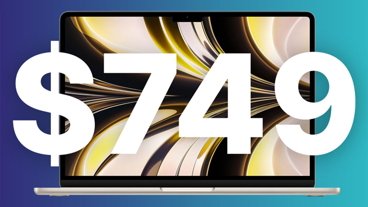

-m.jpg)





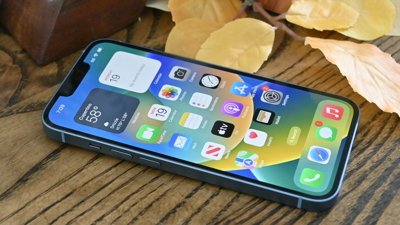
 William Gallagher
William Gallagher
 Wesley Hilliard
Wesley Hilliard
 Christine McKee
Christine McKee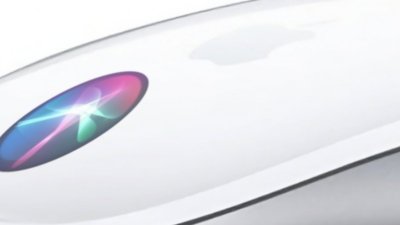
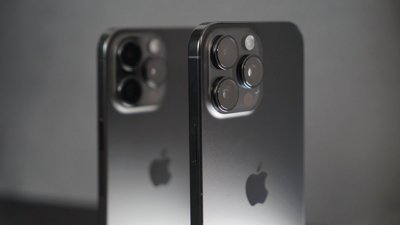
 Andrew Orr
Andrew Orr
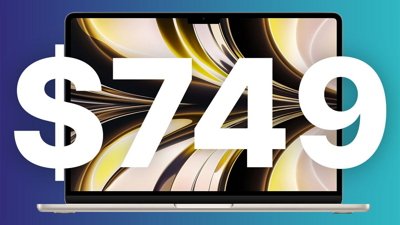

 Andrew O'Hara
Andrew O'Hara
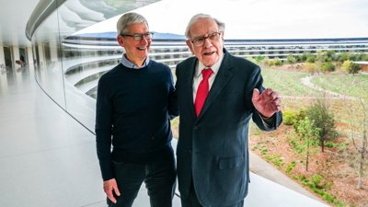
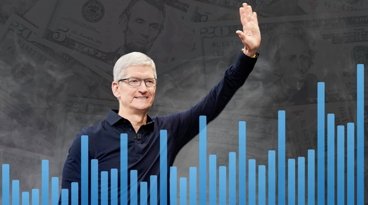



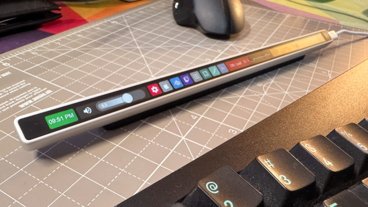

39 Comments
$250 price target? That sounds wildly optimistic for the next couple of years at least.
It wouldn't be Munster if there wasn't a $250 price target. They will either need 100% growth, or significant increases in the economic outlook to get there. AAPL P/E is around 16 now. Never would have expected that...
$250 price target? That sounds wildly optimistic for the next couple of years at least.
Very optimistic

____________
When will Apple release a new iPhone?
Most investors believe the iPhone hardware will be the same throughout 2009 as it is today; we disagree. While Apple has indicated that it differentiates the iPhone from its competitors by software, the company has not addressed its strategy to segment the market by expanding the iPhone lineup as it has the iPod lineup. Specifically, Apple could offer a SKU at a lower price than the current $199 entry price and/or a premium SKU at or above the higher priced $299 16GB model. Apple could lower the price by removing features like 3G and GPS; alternatively, Apple could make a premium SKU with a sleeker design using higher-end materials, more processing power, better graphics and more storage. We believe Steve Jobs' comments on the Sept. quarter conference call regarding Apple's iPhone strategy in CY09 support our thesis of new iPhone models at different prices in CY09: "I think we have to be the best. And I think we have to not leave a price umbrella underneath us."
I have a friend who is a Genius at an Apple Retail store and he told me that a very high percentage of customers who come in for technical support have less than 1GB of data on their iPhone.
Many people do not use the iphone for music or videos.
They do use it as a phone and for apps.
If Apple wanted to offer a lower priced iPhone, the best way would be to introduce smaller capacity models.
This keeps the iPhone platform consistent as far as hardware capabilities.What I would like to see:
8GB iPod Touch = $229
16GB iPod Touch = $299
32GB iPod Touch = $399
8GB iPod Touch 3G = $29 with 2yr contract **
16GB iPod Touch 3G = $129 with 2yr contract
32GB iPod Touch 3G = $229 with 2yr contract
2GB iPhone 3G = $29 with 2yr contract **
4GB iPhone 3G = $129 with 2yr contract **
8GB iPhone 3G = $199 with 2yr contract
16GB iPhone 3G = $299 with 2yr contract
**I think in the current economy these would be hot products.
$29 to buy and $29 a month for unlimited mobile internet.
It would also help to expand the iPhone OS user base and further establish it as the mobile OS standard.
Apple grew their revenue by almost 50% last year, and their profit by almost 85%. The numbers say they're growing even during this downturn. Plus that have a proven pipeline that routinely delivers new market-changing products, and they have the cash on hand to keep innovating.
What other large blue-chip company can demonstrate that kind of growth today, and potential for growth tomorrow?